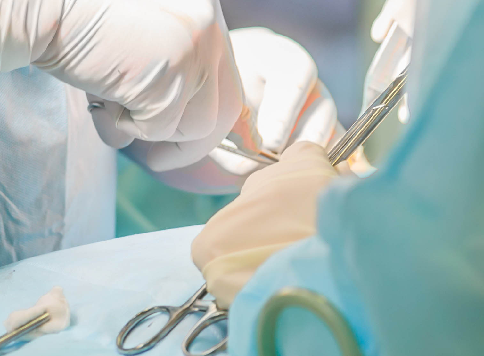Biozorb is a major cancer treatment advancement. This novel technology was developed to enhance the precision and efficiency of radiotherapy for breast cancer patients. Biozorb is an innovative medical device with the potential to improve the accuracy of radiation therapy for breast cancer. The innovative design and features of the Biozorb have introduced a new era of cancer therapy as technology continues to transform healthcare.
What is Biozorb?
Biozorb is a bioabsorbable marker with a three-dimensional structure. During a lumpectomy, the surgeon places this device at the tumor site to assist the radiation therapy to be targeted correctly. The device improves cosmetic outcomes by supporting the breast tissue after surgery in addition to acting as a marker.

Pros
Improved Radiation Targeting
Radiation targeting can be improved by Biozorb, which is one of its most important benefits. Oncologists may deliver radiation therapy with increased accuracy and lessen damage to the adjacent healthy tissues by offering a clear and exact image of the tumor spot.
Aids in Post-Treatment Monitoring
The distinctive structure of Biozorb aids in post-treatment monitoring. Using imaging methods like mammography, medical personnel can locate the device and track changes to make sure no abnormal tissue is growing there.
Better Cosmetic Results
Deformities can occasionally result after conventional breast cancer surgery. However, the support that Biozorb provides for breast tissue can help improve cosmetic results, giving the patient a more natural-looking appearance following treatment.
Radiation Exposure Reduced
Due to the precise localization of the tumor by Biozorb, radiation can be applied to the tumor only, sparing healthy tissues. For patients receiving radiation therapy, this may result in fewer adverse effects and an improvement in their quality of life.
Cons
Risks of Surgical Placement
Risks associated with the surgical installation of Biozorb include infection, bleeding, and pain. When evaluating the use of the device, surgeons must carefully balance these dangers against the potential advantages.
Imaging Errors
In some instances, the presence of Biozorb can produce artifacts on imaging scans, leading to possible confusion or misinterpretation of results. For precise evaluations, radiologists must be aware of these artifacts.
Limited Availability and Expertise
The surgical insertion of the specialized gadget Biozorb necessitates the appropriate training. Its availability may be restricted to medical centers with the required expertise, potentially limiting patient access.
Potential Complications
Every medical procedure has risks. Migration, tissue response, or discomfort with the device are all potential concerns with biozorb use. These possible problems must be explained to patients before therapy.
Complications
Surgical Risks
The implantation of Biozorb entails inherent risks, including bleeding, anesthesia issues, and scars. Patients must discuss these hazards with their surgeon prior to the procedure.
Infection Concerns
Any implant has the potential to raise concerns about infections at the surgical site. However, appropriate sterile techniques and postoperative care can substantially reduce this risk. The incision site should be closely monitored for indicators of infection, such as redness, swelling, and discharge.
Migration Issues
The Biozorb implants are intended to stay in place until they are absorbed, but there have been instances where migration has caused the device to move from its initial location. This might affect how precisely radiation therapy works. Migratory problems can be quickly identified and treated with close monitoring and follow-up with healthcare providers.
Reviews
According to a research article published on the NCBI website, the BioZorb arm exhibited considerable reductions in clinical target volume (CTV) and planned target volume (PTV), but not in ipsilateral lung or heart irradiation.
In 46% of cases, radiation oncologists considered BioZorb useful for reducing the boost planning target volume, according to a survey cited in an article published in the journal Anticancer Research.
